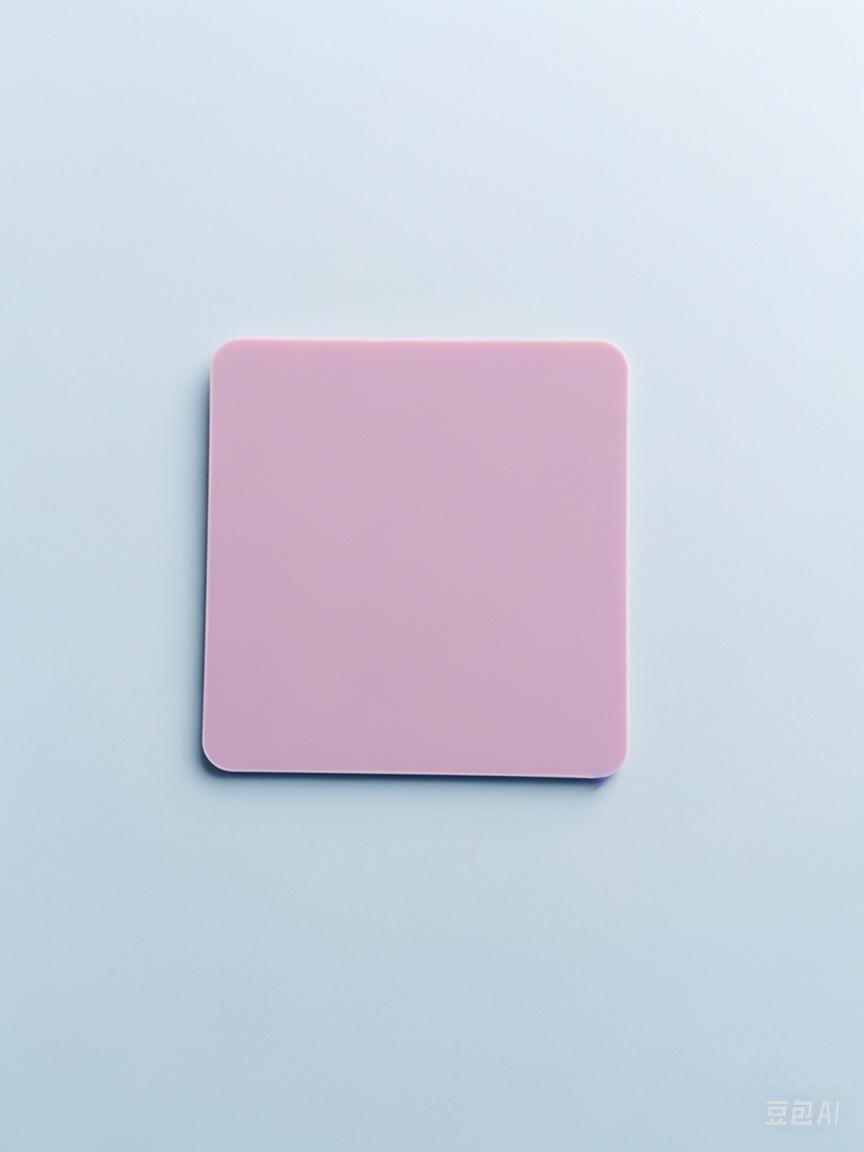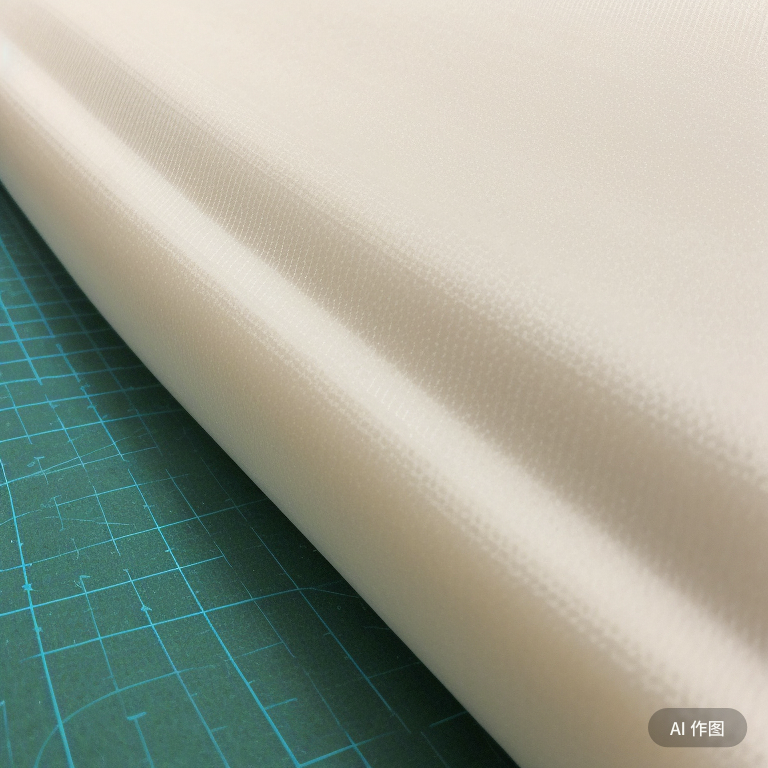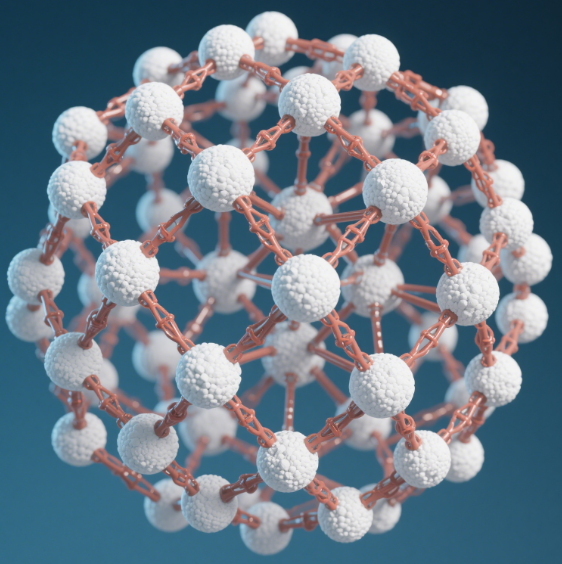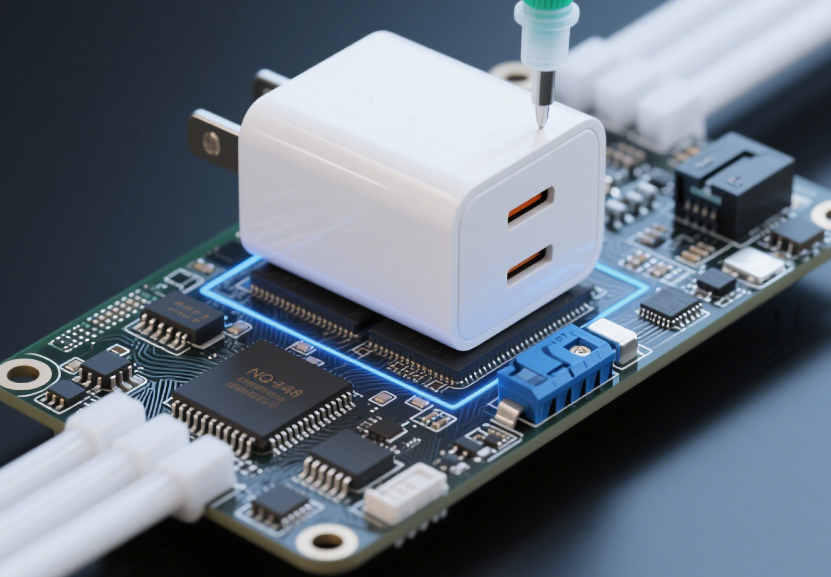Thermal Resistance Report of Thermal Conductive Silicone Sheet
In modern electronic devices, the problem of heat dissipation is of vital importance. With the continuous improvement of the integration degree of electronic components, the heat generated by them is also increasing day by day. If the heat cannot be dissipated effectively, it will lead to a decline in device performance, a shortened service life, and even the occurrence of failures. As a commonly used thermal conductive medium material, the thermal conductive silicone sheet plays a crucial role in solving the heat dissipation problem of electronic devices. Its thermal resistance performance directly affects the efficiency of heat transfer, and thus determines the heat dissipation effect of the device. Therefore, in-depth research on the thermal resistance of thermal conductive silicone sheets has important practical significance.
2.1 Definition and Composition
The thermal conductive silicone sheet is a thermal conductive medium material synthesized through a special process, using silicone rubber as the base material and adding various auxiliary materials such as metal oxides. Among them, the silicone rubber provides good flexibility and insulation, while the thermal conductive fillers such as metal oxides greatly improve its thermal conductivity. Common thermal conductive fillers include aluminum oxide (Al₂O₃), boron nitride (BN), etc. For example, aluminum oxide has a relatively high thermal conductivity, usually between 1 – 15W/m・K, and its proportion in the thermal conductive silicone sheet can reach 60% – 80%.
2.2 Common Types and Characteristics
Ordinary thermal conductive silicone sheet: It has basic thermal conductivity, insulation, and shock absorption properties, is widely used, and has a relatively affordable price. It is suitable for the heat dissipation requirements of general electronic devices.
Strongly adhesive thermal conductive silicone sheet: It has strong adhesion on both sides. During the installation process, no additional fixing measures are required, and it can be conveniently and quickly attached between the heat source and the heat dissipation device, greatly improving the assembly efficiency, and it is not easy to shift during use.
Thermal conductive silicone sheet with back silicon rubber cloth: A silicon rubber cloth is pasted on the back of the silicone sheet, which enhances the mechanical strength and wear resistance of the product. At the same time, the insulation performance of the silicon rubber cloth further improves the safety of the product. It is suitable for application scenarios with high requirements for material strength and insulation.
Thermal conductive silicone sheet with glass fiber in the middle: Glass fiber is added in the middle of the silicone sheet, which effectively improves the tear resistance of the silicone sheet, making it not easy to be damaged in a complex installation environment or under the action of a large external force, and prolonging the service life of the product.
3.1 Definition of Thermal Resistance
Thermal resistance refers to the resistance encountered during the heat transfer process of a material under the condition of a temperature difference. Its physical meaning is the amount of heat transferred per unit time and per unit temperature difference when heat passes through an object. In the International System of Units, the unit of thermal resistance is ℃/W (degrees Celsius per watt). For a thermal conductive silicone sheet, the thermal resistance represents the degree of obstruction encountered during the process of heat transfer from the heat source through the silicone sheet to the heat dissipation device.
3.2 Influence of Thermal Resistance on Heat Dissipation Performance
The lower the thermal resistance, the stronger the ability of the thermal conductive silicone sheet to transfer heat. Under the same temperature difference condition, it can transfer more heat. This means that the temperature of the heat source can be more effectively reduced, thus ensuring that the electronic device operates stably at a lower temperature. For example, in CPU heat dissipation, if a thermal conductive silicone sheet with a lower thermal resistance is used, the heat generated by the CPU can be quickly transferred to the heat sink, and then dissipated into the surrounding environment through a fan and other heat dissipation devices, effectively preventing the CPU from experiencing performance degradation such as frequency reduction due to overheating. On the contrary, if the thermal resistance is too high, the heat will accumulate at the heat source, causing the temperature to keep rising, which seriously affects the performance and reliability of the device.
4.1 Steady-state Method
4.1.1 Principle
The steady-state method is based on Fourier’s law. Under stable heat flow conditions, the thermal resistance is calculated by measuring the temperature difference on both sides of the thermal conductive silicone sheet and the heat flow passing through it. When a constant heat flow is applied to one side of the thermal conductive silicone sheet, after a period of time, the temperature distribution inside the silicone sheet will reach a stable state. At this time, according to Fourier’s law Q = -λA (dT/dx) (where Q is the heat flow, λ is the thermal conductivity, A is the heat transfer area, and dT/dx is the temperature gradient), the thermal resistance R = (T₁ – T₂)/Q (T₁ and T₂ are the temperatures on both sides of the silicone sheet respectively) can be derived.
4.1.2 Test Equipment and Process
The test equipment mainly includes a heating device, a temperature measurement device, and a sample fixture. The heating device is used to provide a stable heat flow to the thermal conductive silicone sheet. The temperature measurement device usually uses high-precision thermocouples or thermal resistors to accurately measure the temperatures on both sides of the silicone sheet. The sample fixture is used to fix the thermal conductive silicone sheet to ensure that the heat can pass through the sample evenly.
The test process is as follows: First, place the thermal conductive silicone sheet sample in the sample fixture to ensure a tight installation without air gaps. Then, turn on the heating device, set the heating power, and make the heat pass through the silicone sheet stably. After the temperature reaches a stable state, record the temperatures T₁ and T₂ on both sides of the silicone sheet and the heat flow Q passing through it. Finally, calculate the thermal resistance according to the thermal resistance calculation formula.
4.2 Transient Method
4.2.1 Principle
The transient method is to apply an instantaneous thermal pulse to the thermal conductive silicone sheet, and then measure the temperature change curve over time, and use the heat conduction equation and mathematical model to deduce the thermal resistance in reverse. When the thermal pulse is applied to the silicone sheet, the temperature of the silicone sheet will rise rapidly. As the heat is transferred and diffused, the rate of temperature rise gradually slows down. By analyzing the characteristics of the temperature-time curve and combining with the heat conduction theory, the thermal resistance can be calculated.
4.2.2 Test Equipment and Process
The test equipment is mainly composed of a pulse heating source, a high-speed temperature sensor, and a data acquisition system. The pulse heating source can provide a high-intensity thermal pulse in an extremely short time. The high-speed temperature sensor is used to quickly and accurately measure the temperature change of the silicone sheet under the action of the thermal pulse, and the data acquisition system is responsible for recording and processing the data of the temperature change over time.
The test process is as follows: Install the thermal conductive silicone sheet sample in the test device to ensure good contact with the heating source and the temperature sensor. Start the pulse heating source, apply the thermal pulse, and at the same time, the high-speed temperature sensor starts to measure the temperature change of the silicone sheet in real time and transmit the data to the data acquisition system. The data acquisition system analyzes and processes the collected data, and calculates the thermal resistance using the corresponding mathematical model.
4.3 Comparison of the Two Methods
The advantage of the steady-state method is that the test principle is simple, the result is intuitive, and it is easy to understand and calculate. The test process is stable, and it is less affected by external interference, and can accurately measure the thermal resistance of the thermal conductive silicone sheet under stable heat flow conditions. However, the test time of the steady-state method is long, and it is necessary to wait for the temperature to reach a stable state, which may affect the test efficiency in practical applications.
The advantage of the transient method is that the test speed is fast, and the thermal resistance data can be obtained in a short time. It is suitable for scenarios with high requirements for test efficiency, and can measure the thermal performance of materials in a dynamic thermal environment. However, the test equipment of the transient method is relatively complex, and it has high requirements for test technology and data processing capabilities. The test results may be affected by some factors, such as the waveform of the thermal pulse and the response time of the temperature sensor.
5.1 Material Properties
5.1.1 Types and Contents of Thermal Conductive Fillers
Different types of thermal conductive fillers have different thermal conductivities, which have a significant impact on the thermal resistance of the thermal conductive silicone sheet. For example, the thermal conductivity of aluminum oxide (Al₂O₃) is generally between 1 – 15W/m・K, the thermal conductivity of boron nitride (BN) is 5 – 30W/m・K, and the in-plane thermal conductivity of graphene is as high as 5300W/m・K. In the thermal conductive silicone sheet, the higher the content of the thermal conductive filler, the usually lower the thermal resistance. This is because more thermal conductive fillers can form more thermal conduction paths and accelerate the heat transfer. However, when the filler content is too high, it may lead to a decrease in the flexibility of the silicone sheet and worse processing performance.
5.1.2 Performance of the Silicone Base Material
The silicone base material not only plays the role of support and insulation, but also its own thermal performance will affect the thermal resistance. A high-quality silicone base material should have a low thermal resistance and good thermal stability. Generally speaking, silicone rubber with a higher molecular weight has a higher degree of cross-linking and better thermal stability. It is not easy to decompose or deteriorate in performance in a high-temperature environment, thus helping to maintain a low thermal resistance. In addition, the purity of the silicone rubber will also have an impact on the thermal resistance. The lower the impurity content, the smaller the obstruction in the heat conduction process, and the lower the thermal resistance.
5.2 Physical Structure
5.2.1 Thickness
The thickness of the thermal conductive silicone sheet is positively correlated with the thermal resistance. The greater the thickness, the longer the distance that the heat needs to be transferred when passing through the silicone sheet, and the greater the resistance it encounters, so the thermal resistance increases accordingly. For example, the thermal resistance of a 0.5mm-thick thermal conductive silicone sheet is usually lower than that of a 1mm-thick silicone sheet. In practical applications, on the premise of meeting the requirements such as filling the gap, a thinner thermal conductive silicone sheet should be selected as much as possible to reduce the thermal resistance and improve the heat dissipation efficiency.
5.2.2 Flatness and Roughness
The flatness and roughness of the surface of the silicone sheet have an important impact on the contact thermal resistance between it and the heat source and the heat dissipation device. A silicone sheet with good surface flatness can fit better with the contact surface, reducing the air gap, and thus reducing the thermal resistance. On the contrary, if the surface roughness is too large, it will lead to a decrease in the contact area, and air is likely to accumulate between the contact surfaces. Since air is a poor conductor of heat, it will greatly increase the thermal resistance. Therefore, during the production process, it is necessary to strictly control the flatness and roughness of the surface of the silicone sheet to improve its heat dissipation performance.
5.3 Working Conditions
5.3.1 Temperature
Temperature has a certain influence on the thermal resistance of the thermal conductive silicone sheet. Generally, within a certain temperature range, as the temperature rises, the thermal resistance of the silicone sheet will decrease slightly. This is because as the temperature rises, the thermal motion of molecules intensifies, which is conducive to heat transfer. However, when the temperature exceeds a certain range, the silicone sheet may experience phenomena such as aging and decomposition, resulting in a sharp increase in thermal resistance. Different types of thermal conductive silicone sheets have different applicable temperature ranges. For example, the temperature resistance range of ordinary thermal conductive silicone sheets is generally – 50℃ – 220℃, while for some specially designed high-temperature resistant thermal conductive silicone sheets, the temperature resistance range can reach – 200℃ – 200℃.
5.3.2 Pressure
When installing the thermal conductive silicone sheet, applying an appropriate pressure helps to improve its degree of fit with the contact surface, thereby reducing the thermal resistance. The pressure can make the silicone sheet better fill the tiny gaps between the contact surfaces, squeeze out the air, and increase the actual heat conduction area. However, if the pressure is too high, it may cause excessive compression of the silicone sheet, affect its physical properties, and even damage the silicone sheet or related electronic components. Generally speaking, for most thermal conductive silicone sheets, the recommended installation pressure is between 15 – 50psi.
6.1 Experimental Purpose and Method
The purpose of this experiment is to test the thermal resistance of different types of thermal conductive silicone sheets to provide reference data for practical applications. The steady-state method is adopted in the experiment, and high-precision heating devices, thermocouple temperature sensors, and heat flow meters are used to ensure the accuracy of the test data. During the experiment, the temperature of the test environment is kept constant at 25℃, and each type of thermal conductive silicone sheet is tested multiple times, and the average value is taken as the final result.
6.2 Experimental Results and Analysis
Ordinary thermal conductive silicone sheet 1.0 0.45
Ordinary thermal conductive silicone sheet 1.5 0.60
Strongly adhesive thermal conductive silicone sheet 1.0 0.42
Thermal conductive silicone sheet with back silicon rubber cloth 1.0 0.43
Thermal conductive silicone sheet with glass fiber in the middle 1.0 0.44
7.1 Case 1: CPU Heat Dissipation
In the CPU heat dissipation system of a certain computer host, an ordinary thermal conductive silicone sheet with a thickness of 1.0mm and a thermal resistance of 0.45℃・cm²/W was initially used. When the CPU was running at full load, the temperature was as high as 80℃, and running for a long time might affect the performance and service life of the CPU. Later, it was replaced with a strongly adhesive thermal conductive silicone sheet with a lower thermal resistance. The thickness was also 1.0mm, but the thermal resistance was reduced to 0.42℃・cm²/W. After the replacement, under the same condition of the CPU running at full load, the temperature dropped to 75℃, effectively improving the heat dissipation situation of the CPU and enhancing the stability and performance of the computer.
7.2 Case 2: LED Lighting Heat Dissipation
In the design of a certain LED lamp, a thermal conductive silicone sheet with glass fiber in the middle was used for heat dissipation, with a thickness of 0.8mm and a thermal resistance of 0.38℃・cm²/W. During the actual use process, the temperature of the LED lamp beads was effectively controlled, the luminous efficiency of the lamp was stable, and the service life was extended. This is because the thermal conductive silicone sheet with glass fiber in the middle not only has good thermal conductivity, but also its tear resistance ensures that during the long-term use of the lamp, the silicone sheet will not be damaged due to factors such as vibration, thus continuously and effectively playing the role of heat dissipation.
8.1 Conclusion
As an important material for the heat dissipation of electronic devices, the thermal resistance performance of the thermal conductive silicone sheet is directly related to the heat dissipation effect and performance stability of the device. The thermal resistance is affected by various factors such as material properties (such as the types and contents of thermal conductive fillers, the performance of the silicone base material), physical structure (thickness, flatness and roughness), and working conditions (temperature, pressure). Through test methods such as the steady-state method and the transient method, the thermal resistance of the thermal conductive silicone sheet can be accurately measured. Different types of thermal conductive silicone sheets have differences in thermal resistance. In practical applications, an appropriate thermal conductive silicone sheet should be selected according to specific needs to achieve the best heat dissipation effect. For example, for scenarios with high requirements for adhesion, a strongly adhesive thermal conductive silicone sheet can be selected; for applications requiring high mechanical strength, a thermal conductive silicone sheet with back silicon rubber cloth or a thermal conductive silicone sheet with glass fiber in the middle is more suitable.
8.2 Prospect
With the continuous development of electronic technology, the performance requirements for thermal conductive silicone sheets will be higher and higher. In the future, the research and development direction of thermal conductive silicone sheets may focus on further reducing the thermal resistance, improving the high-temperature resistance performance, enhancing the mechanical performance, and improving the processing technology. For example, the development of new types of thermal conductive fillers, such as the combination of nanoscale graphene with other high-performance materials, is expected to significantly improve the thermal conductivity of the thermal conductive silicone sheet and reduce the thermal resistance. At the same time, by optimizing the production process and improving the flatness and uniformity of the silicone sheet, it will also help to improve its heat dissipation performance. In addition, with the enhancement of environmental protection awareness, the research and development of more environmentally friendly, non-toxic and harmless thermal conductive silicone sheets will also become one of the future development trends.

















